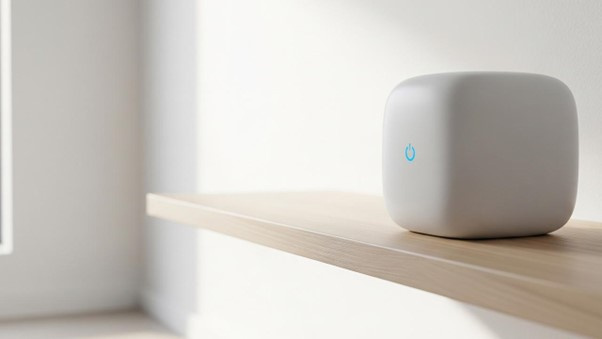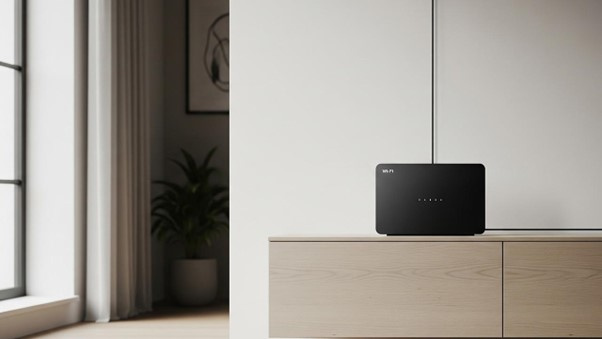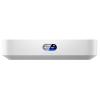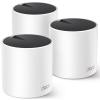The struggle for reliable Wi-Fi in a two-storey house is a common one, but it's a problem with very effective solutions.
Getting rid of those frustrating dead zones often comes down to choosing the right network architecture for your specific home.
Let's delve into the details to help you find the perfect solution.
Why Wi-Fi Struggles in Multi-Level Homes
Wi-Fi signals are radio waves, and they can be easily blocked or weakened by physical obstructions. In a multi-storey house, this includes the floor and ceiling joists, as well as plumbing, appliances, and even furniture.
The further the signal has to travel, and the more obstacles it encounters, the weaker it becomes. This is why you often get great Wi-Fi on the same level as the router but a much slower or non-existent connection on the other floor.
Router Solutions for Two-Storey Houses
When it comes to covering a multi-level home, there are two primary approaches to consider, each with its own advantages.
1. Mesh Wi-Fi Systems:
For most people in two-storey homes, a mesh Wi-Fi system is the gold standard. These systems consist of a main router and one or more satellite units, or "nodes," that are placed strategically around your house.
They all work together to create a single, unified Wi-Fi network, so your devices seamlessly switch to the strongest signal as you move from room to room, without you having to do a thing.
Benefits of Mesh Wi-Fi:
- Whole-Home Coverage: They are purpose-built to cover large and complex layouts.
- Easy Setup and Management: Most systems are controlled via a simple smartphone app, making setup straightforward.
- Scalability: You can easily add more nodes if you find a new dead zone, or if your house is particularly large.


2. Powerful Standalone Routers
If your home is on the smaller side and the layout is relatively open, a high-performance standalone router might be enough.
These routers are equipped with more powerful antennas and advanced technology, like beamforming, which directs the Wi-Fi signal more effectively towards your devices.
Benefits of Standalone Routers:
- Simplicity: It's a single device to manage.
- Performance: High-end models can offer impressive speeds and low latency, which is great for gamers or households with very high-speed fibre connections.
- Cost: Often more affordable than a full mesh system, especially for entry-level models.
Top Router and Mesh System Options
To help you get started, here are some excellent options available at PB Tech in New Zealand, catering to a range of budgets and needs.
Mesh Wi-Fi Systems:
- TP-Link Deco X55 (AX3000) Wi-Fi 6 Mesh System: This is a fantastic all-rounder. With Wi-Fi 6 support and good coverage, it's a great value for money option for most medium to large two-storey homes.
- Netgear Orbi RBE772 (BE11000) Wi-Fi 7 Mesh System: If you have a high-speed fibre connection and want to future-proof your network, this is a premium choice. Wi-Fi 7 is the latest standard, offering blistering speeds and a dedicated backhaul channel for optimal performance.
- ASUS ZenWiFi XD4S (AX1800) Mesh System: A more budget-friendly entry into the mesh world from a reputable brand. It offers reliable Wi-Fi 6 coverage for small to medium-sized two-storey homes.
Standalone Routers:
- TP-Link Archer AX55 (AX3000) Wi-Fi 6 Router: A popular and well-regarded router that provides excellent performance for its price. It's a solid choice if you're looking for a single router to cover a smaller multi-level home.
- ASUS ROG Rapture GT-BE98 (BE25000) Wi-Fi 7 Gaming Router: If you're a serious gamer or have a Hyperfibre connection and a large home, this is a top-of-the-line option. It's a powerful quad-band Wi-Fi 7 router designed for the highest speeds and lowest latency.
- TP-Link Archer BE550 (BE9300) Wi-Fi 7 Tri-Band Router: This is a fantastic standalone choice if you want the latest Wi-Fi 7 technology without the hefty price tag of a full-blown gaming router. It's a tri-band model that can provide strong coverage for large homes.


Essential Wi-Fi Optimisation Tips
No matter which router you choose, these tips will help you get the best possible performance.
- Placement is Paramount: Place the main router or mesh nodes in an open, central location. Avoid hiding them in a cupboard or behind a TV, as this will significantly reduce the signal strength. For multi-storey homes, placing a node on each floor is highly recommended.
- Mind the Interference: Keep your router away from other electronics like microwaves, cordless phones, and Bluetooth devices, as they can interfere with the Wi-Fi signal.
- Upgrade to Modern Wi-Fi: If your current router is several years old, upgrading to a Wi-Fi 6 or Wi-Fi 7 capable device will provide a major performance boost, even if you don't have the fastest internet plan. These newer standards are more efficient and handle multiple devices better.
- Use Ethernet When You Can: For devices that are stationary and need a stable connection, such as a desktop PC, gaming console, or smart TV, use an Ethernet cable. This reduces the load on your wireless network and frees up bandwidth for your other devices.
By carefully considering your home's layout and your connectivity needs, and by choosing a router or mesh system designed for the challenge of a two-storey house, you can finally achieve fast, reliable Wi-Fi in every corner of your home.







